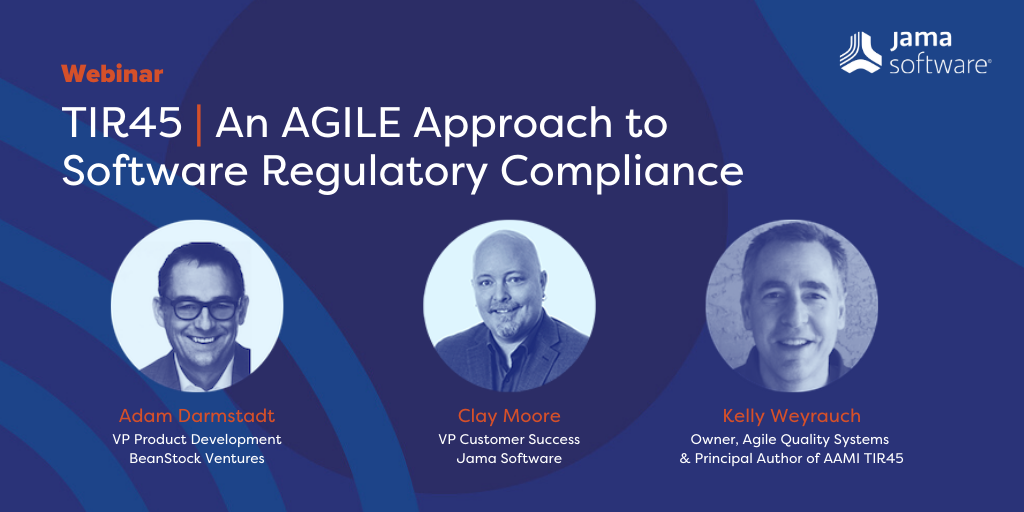WEBINAR: TIR45 | An AGILE Approach to Software Regulatory Compliance
Are you ready to seamlessly move from CLIA, Research Use Only (RUO) or Emergency Use Authorization (EUA) to a clinical software product?
Join us as we discuss an AGILE approach to software regulatory compliance. We’ll be hosting this informative panel discussion with the owner of Agile Quality Systems and principal author of AAMI TIR45, Kelly Weyrauch, and our partner (and panel host) Beanstock Ventures as we to discuss bridging the gaps between modern software development and regulatory requirements.
This panel de-mystifies the belief that Agile development lacks the proper controls for producing safe and effective software and that the regulation is burdensome. We will share experiences, ideas, and tools you can use for your software regulatory compliance while still staying adaptive and effective.
Date: Thursday, May 20th, 2020
Time: 10:00 – 11:00am PST
Our panelists include:

Adam Darmstadt – VP of Product Development, BeanStock Ventures
Adam is a software engineer with over 19 years of medical device and life science industry experience. Adam and his team are passionate about using lean and AGILE methodologies to speed up reaching the end goal without compromising quality.
Clay Moore – VP of Customer Success, Jama Software
With over 20 years of experience architecting and delivering SaaS-based enterprise solutions, Clay and his team help medical device development teams modernize their approach to requirements, risk, and test management to improve quality and delivery.
Kelly Weyrauch – Owner, Agile Quality Systems & a Principal Author of AAMI TIR45
As one of the principal authors of AAMI TIR45 “Guidance on the use of AGILE practices in the development of medical devices software”, Kelly has worked with the FDA and industry leaders on the application of AGILE practices to the medical device world.
Watch the recording now!


